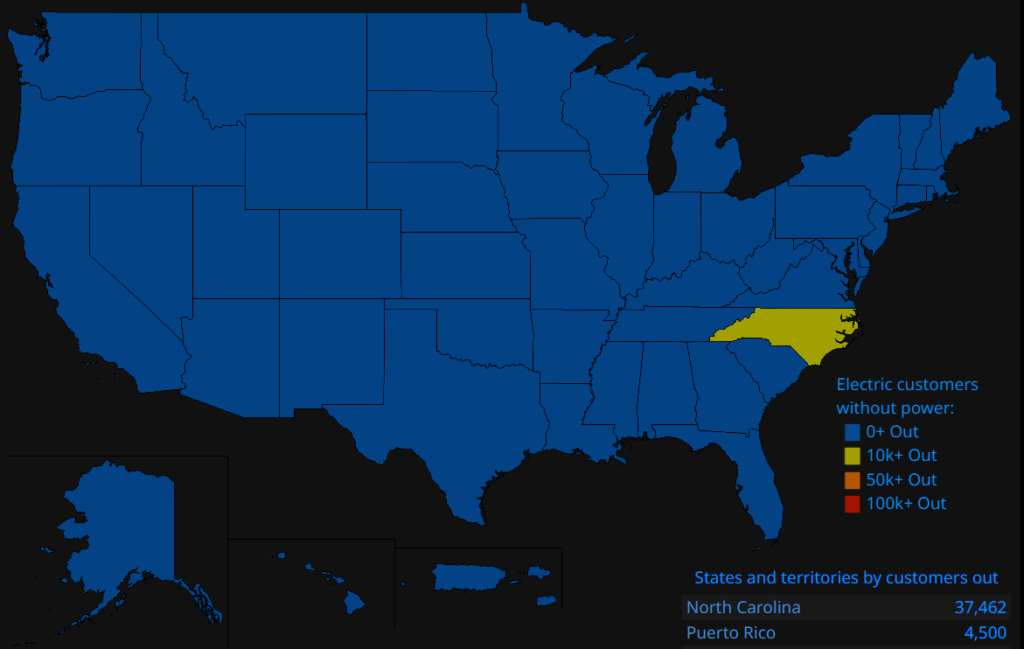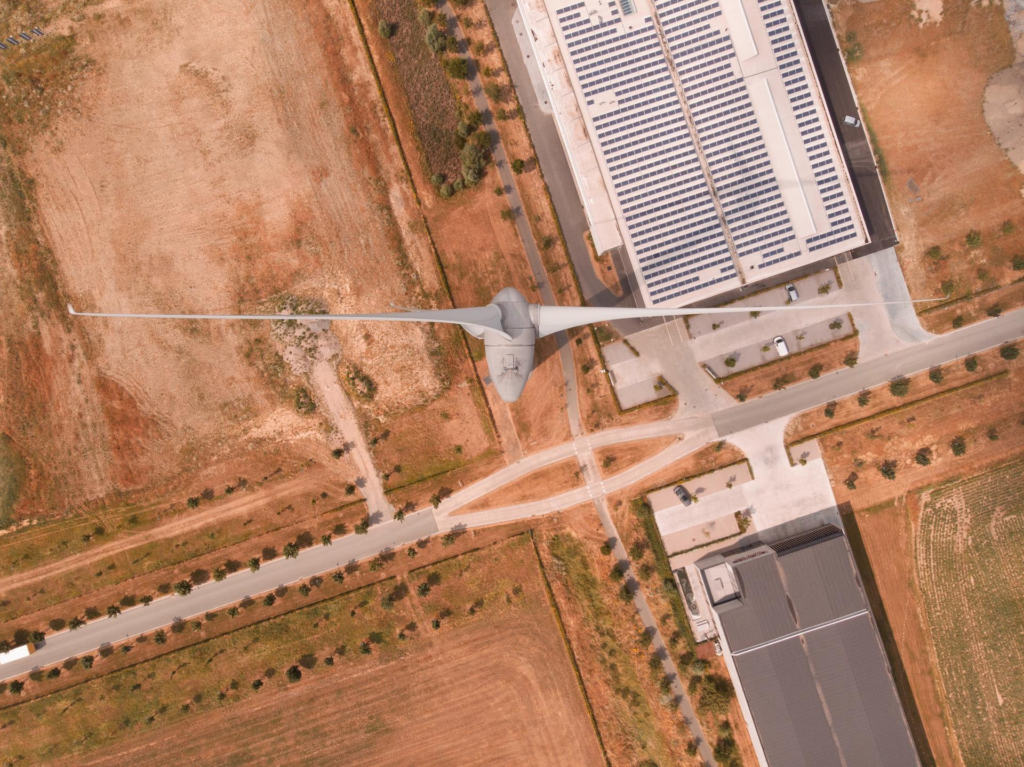05 December 2022 | Climate Tech
Foul play on the grid
By
I say “the grid.” What do you think of? Maybe a colossal, labyrinthine web that spans countries and continents with polls, wires, undersea cables, and more. It moves electrons from power plants into homes, buildings, water sanitation plants. It’s important!
And it is all those things.
But that conception of the grid also makes it seem a bit more formidable and sturdy. At least, it does in my mind; I can only speak for myself.
However, events this weekend in North Carolina contradict the idea that the grid is particularly anti-fragile. While there’s a ton of speculation surrounding the motive, we can outline the facts without wading into that. Two different substations were damaged intentionally. The damage was sufficient to cut power access for some 40,000 residents in Moore County, North Carolina.

This is a point I need to stress more, but when the power goes out for a prolonged period, not being able to turn on lights in your home isn’t the only problem. In many buildings, water won’t flow out of taps anymore. Telecommunications are disrupted. Massive amounts of food go to waste at grocery stores and restaurants. Water sanitation plants might only function properly with backup power, even if power is only down for a few hours, which happened recently in Houston. This thread from a local on the ground in Moore County breaks down the chaos well.
Energy is vital to everything in society, making grid resilience and reliability a paramount concern. Let’s explore more.
Breaking it down
To break down the breakdown in the grid in North Carolina, it helps to know what a substation is. A substation is a facility that regulates the flow of electricity from power plants to buildings and has a ton of different electrical equipment coordinating processes.
The electricity from a utility-scale power plant needs to be ‘transformed’ before you can use it in your home. Think of voltage like water pressure. What’s coming from a natural gas power plant is a gushing river, and what your home is ready to use is more like a babbling brook. Substations help step up or step down voltage depending on distance traveled (via high-voltage transmission lines) and the amount of power required for the end-user.
In short, substations ensure electricity is delivered efficiently and reliably to downstream users and applications. It’s kind of like air traffic control for all the electrons moving around on the grid.

These substations are what armed attackers went after. They knew what they were doing, too, because substations are one of the most integral and central pieces of infrastructure on the electrical grid. Since they connect many different parts of the grid, they’re even more important in some senses than any given power plant. Many power plants may route electrical output through one substation. Take down the substation, and you bring it all down.
Here’s the next challenge – substations are also harder to re-operationalize if there’s a significant problem. If a squirrel electrocutes itself on the high-voltage wires in your backyard and knocks one out, the utility usually fixes it in a few hours. Last week I saw workers in LA put up a new utility pole to replace an aging one in a few hours in the early morning.
But repairing a substation is a much more involved job, for which parts can also be scarce. Halfway across the world, challenges in Ukraine tell the same story. Ukrainians are in desperate need of parts to repair substations (and other grid components) given repeated Russian assaults on their energy assets.
Let’s watch how this substation repair plays out in North Carolina over the coming days. God willing, it goes quickly. When it invariably isn’t all that fast and is costly remember it every time some politician talks about America’s aging energy infrastructure in the abstract. It’s playing out here before our eyes; older infrastructure is less resilient and harder to replace.
The Department of Energy has found that 70% of U.S. transmission lines and power transformers are over 25 years old, and 60% of circuit breakers are over 30 years old. I talk a lot about the need to build more transmission and expand the grid to use renewable energy and allow EV charging networks to grow. But even just keeping the existing grid running will pose challenges too. Intentional sabotage really hurts.

Zooming out
Concerns about attacks on energy infrastructure have become commonplace this year. Russia attacks Ukraine’s energy infrastructure non-stop in acts of war. Someone blew up the undersea Nordstream natural gas pipeline a few months ago, releasing massive amounts of methane into the ocean and, ultimately, the atmosphere. Cyberattacks on energy infrastructure have significantly impacted assets in the U.
Still, there have been fewer ‘straight-up’ (which is to say, not cyber) attacks on energy infra in the U.S. in recent years. One famous example came in 2013 when gunmen shot and damaged an electrical substation in San Jose. Once coined ‘the most important terror attack you’ve never heard of’ (read more here), it took a skilled team less than half an hour to damage the substation (transformers, mainly) and caused $15M in damages.
No one knows who was responsible for the attack in San Jose. The assailants in North Carolina may well be copycats. Many cyberattacks on energy infrastructure in general, like Colonial Pipeline in 2021, also have unresolved questions.
Attacks on energy infrastructure are increasing at the wrong time, as 2022 has already been a challenging year for energy markets with sky-high prices.

Companies are trying to help enhance grid resilience:
- Skygraft offers aerial infrastructure inspection
- NoteWorthy AI monitors the distribution grid proactively to look for problems
- SkySpecs uses drones to monitor wind turbines
- Laki, out of Iceland, makes early-issue detection tech for high-voltage transmission lines via a small aluminum box that attaches to the lines.
- Spanish power company Iberdola recently issued a start-up challenge for firms to forecast weather-related damages to transmission infrastructure.
Still, this is a niche area in venture capital and innovation. In two years of talking to people, writing, and a thirty-minute google search just now, only a few companies focused on safeguarding the grid against non-weather related threats crossed my radar. Visionary.
There’s a term for this niche I’m calling attention to: Grid hardening, which includes everything from weatherizing to risk assessment and mitigation. If there’s room for a wildfire mitigation venture fund, there’s room for a grid-hardening venture fund.
The net-net
Unfortunately, acts of war and vandalism now count as challenges we need climate adaptation solutions for. The U.S. and many other countries already need massive grid investments to make full use of renewable energy, reduce greenhouse gas emissions, make electricity more affordable, and expand access to EVs. There’s a huge opportunity for cybersecurity and ‘meatspace’ solutions that make all electrical grid components more resilient, whether to inclement weather, old age, or accidents. And now, intentional attacks.
Public spending on grid expansion and upgrades is the starting point. According to the American Society of Civil Engineers, all three components of the grid (generation, transmission, and distribution) have an investment gap that will grow to $200B by the end of the decade). The Inflation Reduction Act includes $65B for grid upgrades; great start, but more will be required.
Further, the private sector should get behind this in a big way, too. Peter Thiel and a16z types, who are pretty firmly not climate tech investors, should be interested. Whether it’s Thiel’s defense bent or a16z’s new ‘American Dynamism’ fund, the grid goes beyond climate tech. To be sure, it is also climate tech. With every passing day, the climate tech tent is becoming indistinguishable from the humanity-as-a-whole-tent.